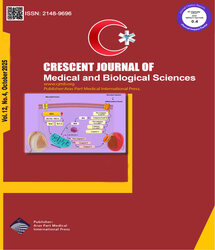

| Original Article | |
| The Association between Premenstrual Syndrome and Physical Activity and Aerobic Power in Female High School Students | |
| Yekta Sabaei1, Sara Sabaei2, Davood Khorshidi3, Soheil Ebrahimpour4, Fatemeh Fallah-Rostami5 | |
| 1Karaj Branch, Islamic Azad University, Karaj, Iran 2Science and Research Branch, Islamic Azad University of Rasht, Rasht, Iran 3 Department of Physical Education and Sport Sciences, Saveh Branch, Islamic Azad University, Saveh, Iran 4Infectious Diseases and Tropical Medicine Research Center, Babol University of Medical Sciences, Babol, Iran 5Ministry of Health and Medical Education, Psychiatry and Behavioral Sciences Research Center, Mazandaran University of Medical Sciences, Sari, Iran |
|
|
CJMB 2015; 2: 053-058 Viewed : 6144 times Downloaded : 5784 times. Keywords : Exercise Test, Physical Activity, Premenstrual Syndrome (PMS) |
|
| Full Text(PDF) | Related Articles | |
| Abstract | |
Objective: The purpose of this study was to investigate the relationship between premenstrual syndrome
(PMS) and physical activity, aerobic power, and anaerobic power in female high school students. Materials and Methods: A total of 367 female high school students were selected randomly from district 5 of Tehran. Among them, 40 students who had the highest PMS score and all the inclusion criteria of the study were selected as subjects. The level of physical activity was assessed using the Baecke Physical Activity Questionnaire and PMS was assessed using a self-report questionnaire. Aerobic power was assessed using submaximal 1-mile track jog test. Pearson’s correlation coefficient was used for analyzing the relationship between variables. Results: The results indicated a significant negative correlation between PMS and physical activity (r = -0.86 and P < 0.05) and aerobic power (r = -0.71 and P < 0.05). Conclusion: Based on the findings, it seems that regular physical activity, especially aerobic activities, can be effective in reducing the symptoms of PMS. |
Cite By, Google Scholar
Google Scholar
PubMed
Online Submission System
 CJMB ENDNOTE ® Style
CJMB ENDNOTE ® Style
 Tutorials
Tutorials
 Publication Charge
Medical and Biological Research Center
About Journal
Publication Charge
Medical and Biological Research Center
About Journal
Aras Part Medical International Press Editor-in-Chief
Arash Khaki
Deputy Editor
Zafer Akan

















